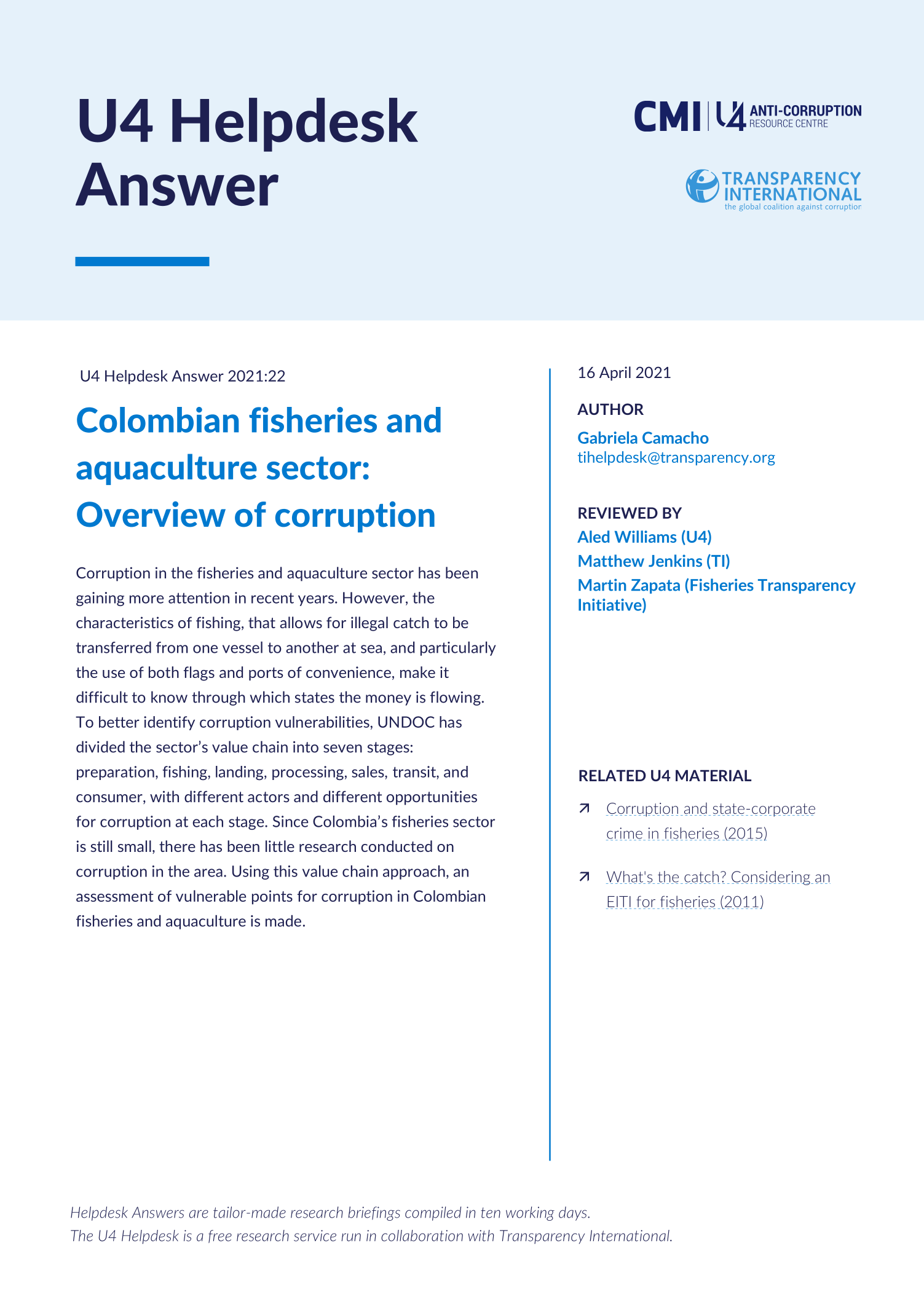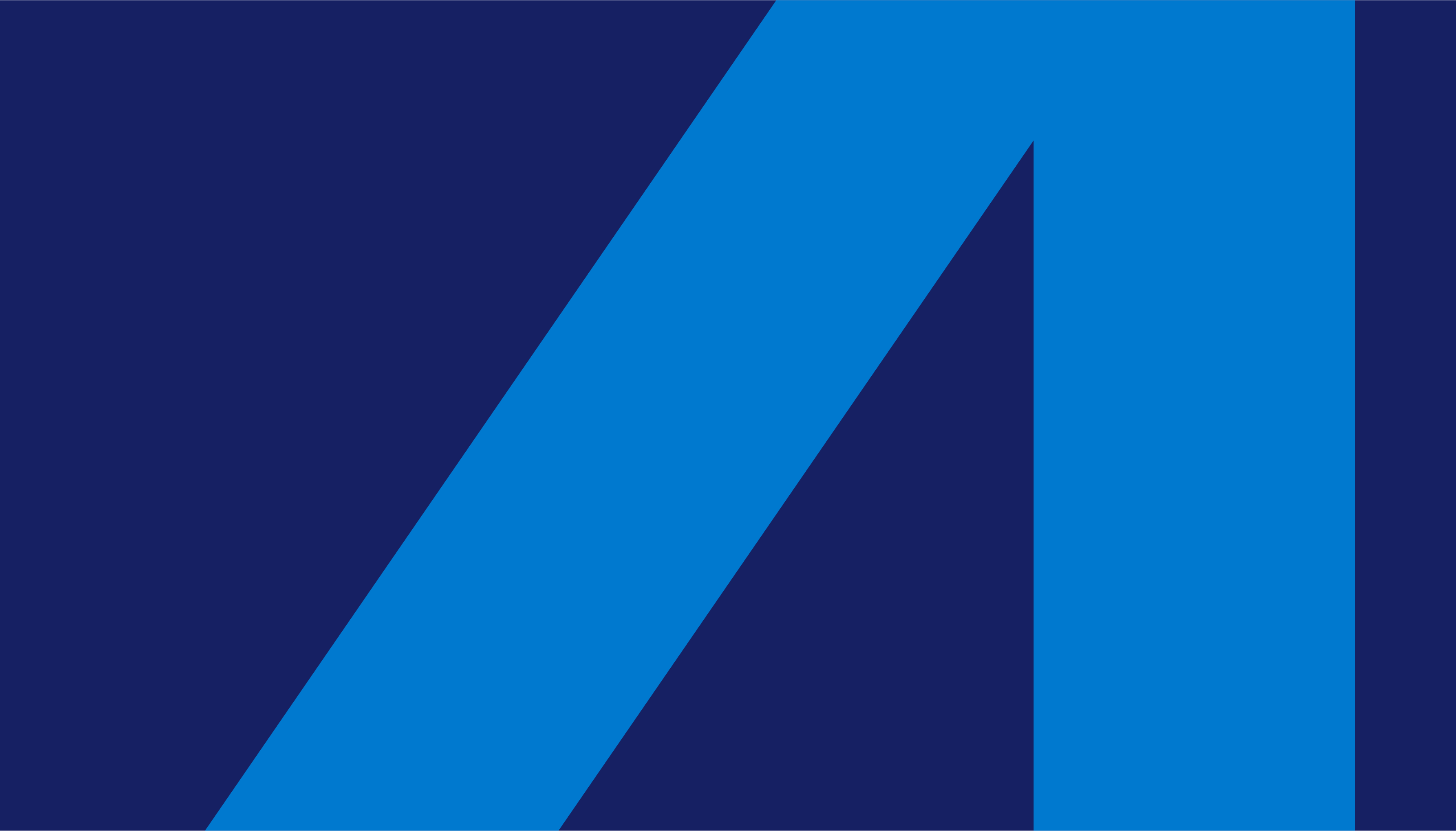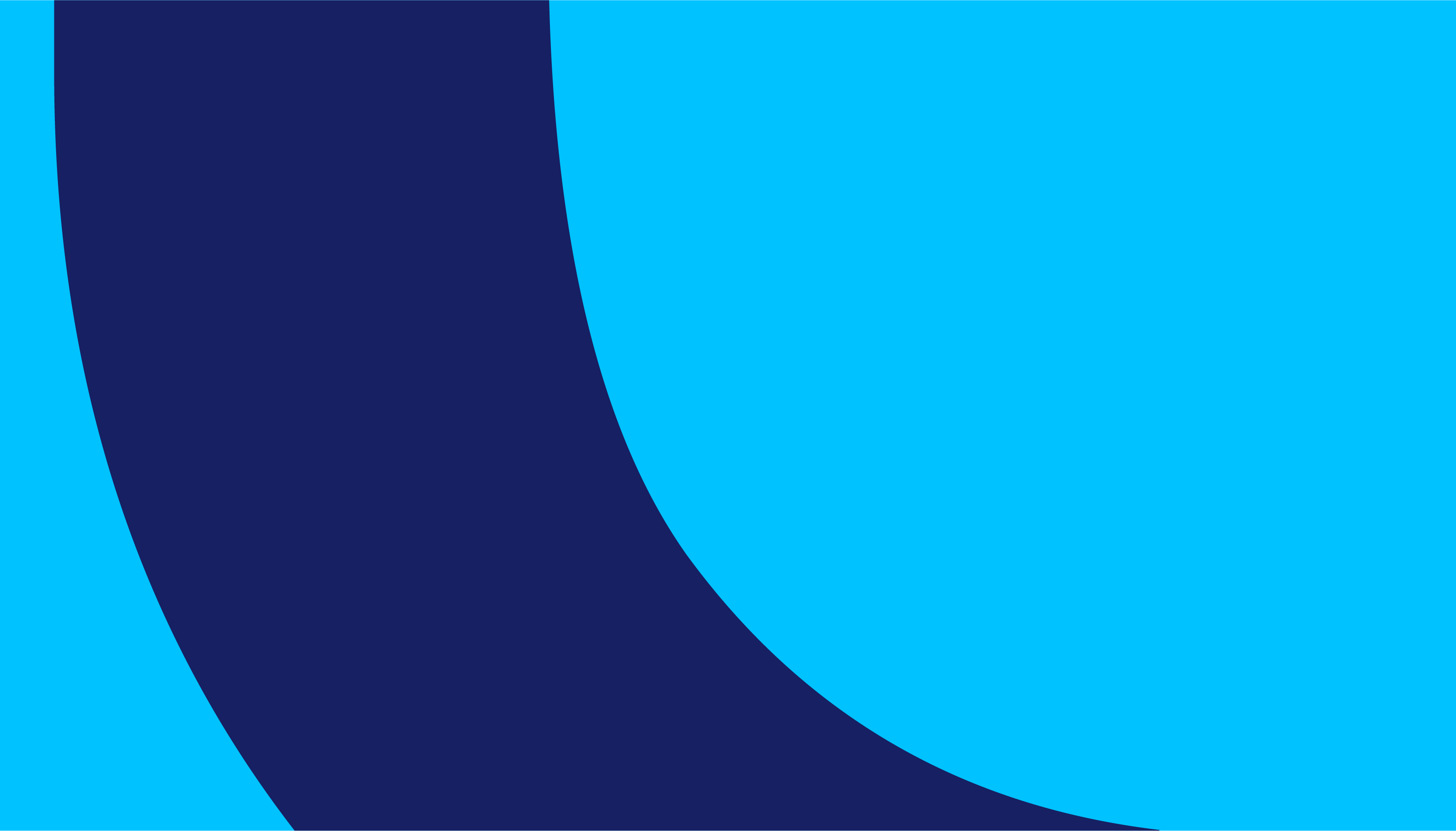Main points
- The characteristics of fishing, which can happen far away from land, allows for Illegal, Unreported and Unregulated (IUU) fishing to take place unsanctioned. The use of flags and ports of convenience further complicates efforts of law enforcement in the sector.
- UNDOC (2019) has developed a value chain approach to identify corruption vulnerabilities at each of the seven stages of the chain: preparation, fishing, landing, processing, sales, transit, and consumer.
- Artisanal fisheries are mostly affected by petty corruption and disproportionately affects poorer households.
- Although there is little information for corruption in the Colombian fisheries and aquaculture sector, the main risks come from IIU fishing and possible links of the sector with narcotraffic.


